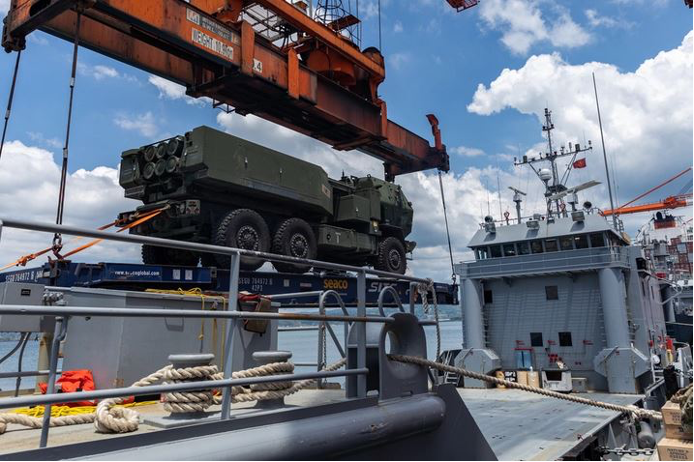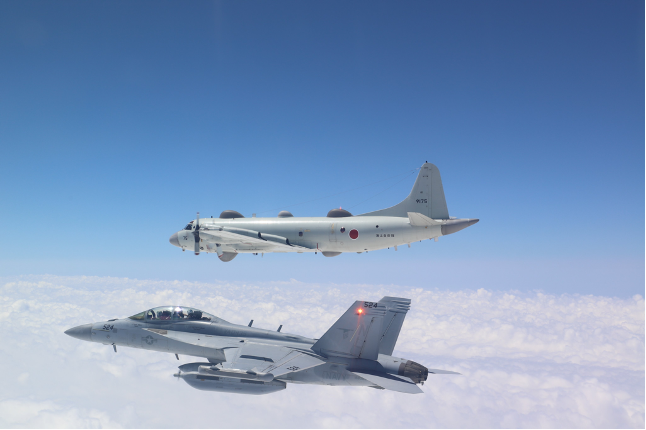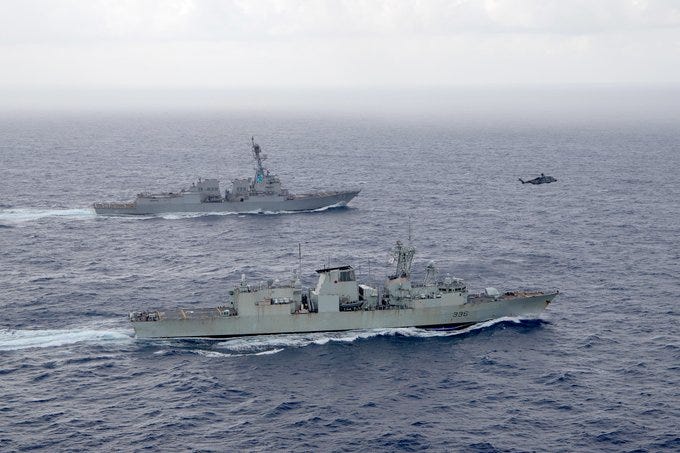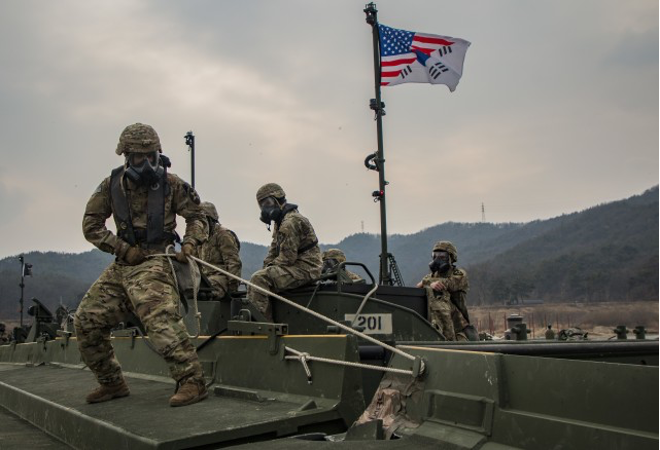Pushing back on China: An aggressive nation must be addressed
The U.S. and its allies and partners in the Pacific are taking a unified approach to address efforts by China to become the world’s most powerful nation. The Chinese Communist Party (CCP) is employing multiple components of national power using wide-ranging diplomatic, informational, military and economic strength, simultaneously, to intimidate and overwhelm the countries of their region and are pushing elsewhere.
In response to this obvious effort, as presented in the U.S. Department of Defense’s, Military and Security Developments Involving the People’s Republic of China, 2021, an annual report to the U.S. Congress, the international community is taking notice of China’s actions to support their goals. It is not just a matter of outcompeting other countries, the Chinese focus is on domination.
The U.S., with growing international cooperation, is addressing China’s actions that are in accordance with their planned hegemony. Several recent events point out the necessity in taking Chinese maneuvers as serious and preparatory to military operations.
The military actions do not, in isolation, seem to be definite attempts to gauge the willingness of the U.S. or its allies to engage China. They appear to be signs that China expects that their region is their turf alone.
In June, a Chinese warship appeared to attempt to cut off a U.S. warship that was in international waters, coming within “150 yards” of the U.S. vessel in the Taiwan Strait. No further action in the matter was noted. It appeared to be a warning.
For its part, China accused the U.S. of “provoking bloc confrontation for self-interest.”
Also reported in June, Chinese spies, posing as tourists “blew past a security checkpoint as Fort Wainwright” in Alaska. They were not all that subtle and were quickly subdued.

While there’s been no official response from China on the spying in Alaska, the Chinese who were arrested claimed to have been “viewing the northern lights and other attractions in Alaska.”
In May, a Chinese jet fighter plane “flew within 400 feet of the nose of a U.S. reconnaissance aircraft…” U.S. officials noted the move but gently described in as an “unnecessarily aggressive maneuver.” Another warning.
After the Chinese aircraft incident in May, U.S. Secretary of Defense Lloyd Austin suggested a meeting with his Chinese counterpart Li Shangu which the Chinese declined apparently in protest of the U.S. “suppressing and containing China by any means and imposing sanctions on Chinese officials, institutions and enterprises.”
The Chinese also sent a spy balloon over U.S., starting in January in Alaska, over part of Canada, and after maneuvering over much of the continental U.S., was shot down in February while flying over the Atlantic Ocean off the coast of South Carolina.
The Chinese characterized the entry of the balloon into U.S. airspace as “unintended” and the shootdown as an “obvious overreaction.”
Its attached spy-gear was the size of a school bus. You decide if it was an overreaction.
The obvious nature of China’s transgressions, coupled with the very mush-mouth statements by the CCP, can only mean that China wants the U.S. and its allies to see China powerful on an international basis.
The U.S. and its allies are responding.
In one military example of U.S. efforts to counter Chinese adventurism, the U.S. is building a number of “outposts for American forces in the Asia-Pacific region designed to meet the rising military challenge from China.” The plan seeks to counter probable targeting by the People’s Liberation Army (PLA) of major military installations. The dispersed, and possibly mobile, features of smaller posts will require Chinese planners to reckon with numerous, but lethal, platforms.
“By training to disperse from larger, fixed installations and operate in a more distributed manner, U.S. forces are adapting to two realities,” said Rich Outzen, PhD, Senior Fellow, Atlantic Council and retired U.S. Army colonel. “The first is the demonstrated impact of precision munitions, drones, and stand-off strike in general, which places at risk concentrations of troops, vehicles, and infrastructure. The other is the fact that the PLA, China’s military, has zero operational experience working in a geographically dispersed, decentralized manner. By preventing the PLA from massing on fewer, more static targets, the new operational approach will challenge their untested, and therefore suspect, ability to command and control such a fight.”
Earlier this year, the U.S. and Philippines conducted a major exercise, named Balikatan, that included, “land sea, air and — for the first time — cyber scenarios.”

The U.S. is also addressing China’s foray into providing ingredients for the manufacture of the potent drug fentanyl for delivery into the U.S. where a crisis exists of user deaths.
The U.S. “sanctioned more than a dozen Chinese and Mexican companies… accusing them of shipping or selling equipment that makes counterfeit pills, as it cracks down on imports of illegal fentanyl…” in May.
Other sanctions on China include, CCP leaders in Hong Kong are restricted from travel, a continuation of Trump administration’s prohibition on “all U.S. institutional and retail investors from investing or purchasing from Chinese companies the Department of Defense identified as ‘Communist Chinese military companies,’” companies “supplying Russian military networks,” limiting sales on new semi-conductors, and named Chinese individuals involved in human rights abuses.
One sign that Washington may not fully grasp the task at hand in dealing with China is that the recently signed debt ceiling agreement into law, which keeps in place the Biden administration’s defense budget, includes increased military spending that does not keep pace with inflation.
Further, the deal “shrinks the U.S. Navy to 286 ships by 2025—as China ramps up to a 400-strong fleet designed to subdue Taiwan.” It will prove difficult to make-up with this shortfall in other systems.
South Korea, Japan and Australia are also nations reconfiguring their defense stance with China as a central focus.
South Korea is boosting “nuclear deterrence against North Korea,” a key Chinese ally.
Japan is allowing for joint exercises, and an increase in defense spending to 2% of its GDP.

Australia “unveiled the biggest strategic shift in its military posture since the Second World War to adapt to China’s military build-up.” Included in this effort will be the building of bases in north Australia.

Much work remains, and the recognition matched with actions towards an increasingly aggressive China is not yet complete.
China will use all means to bully and coerce nations to bend to their will and its always useful to remind ourselves that the CCP has no interest in freedom and personal liberty.
Only through intense cooperation and joint action can Chinese planning and execution of their plans be thwarted.


